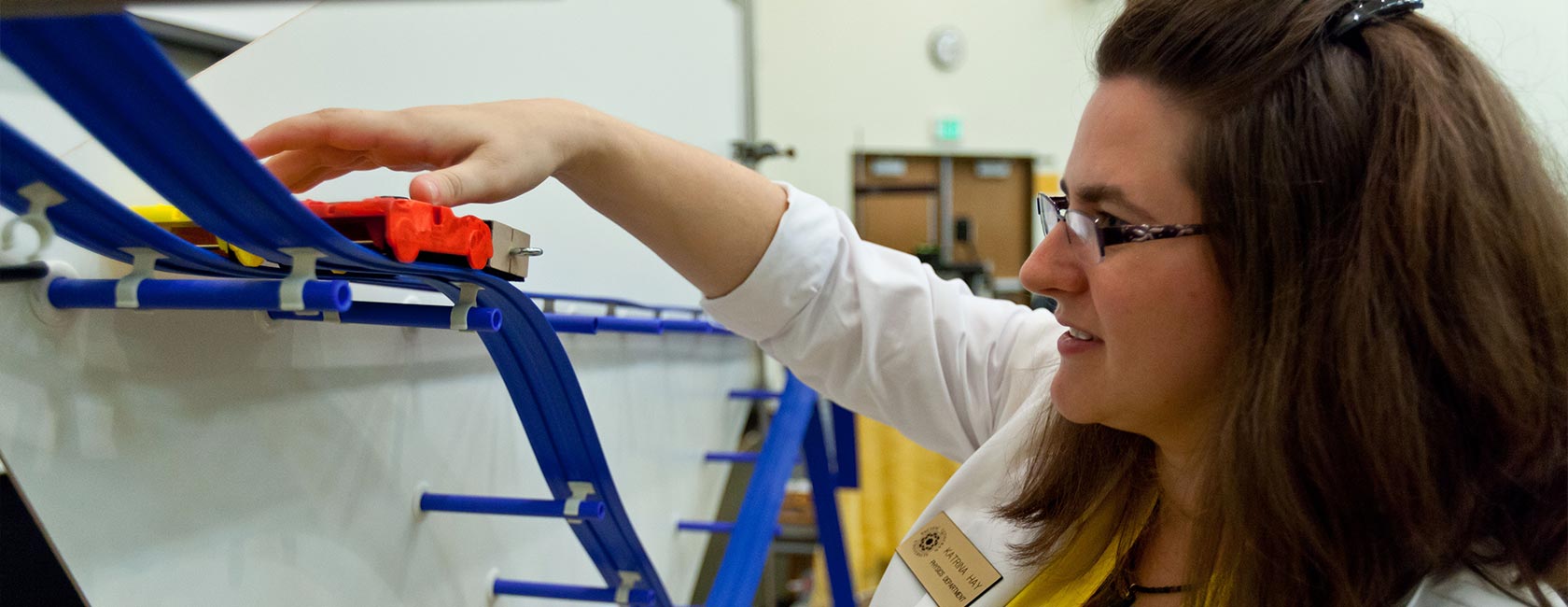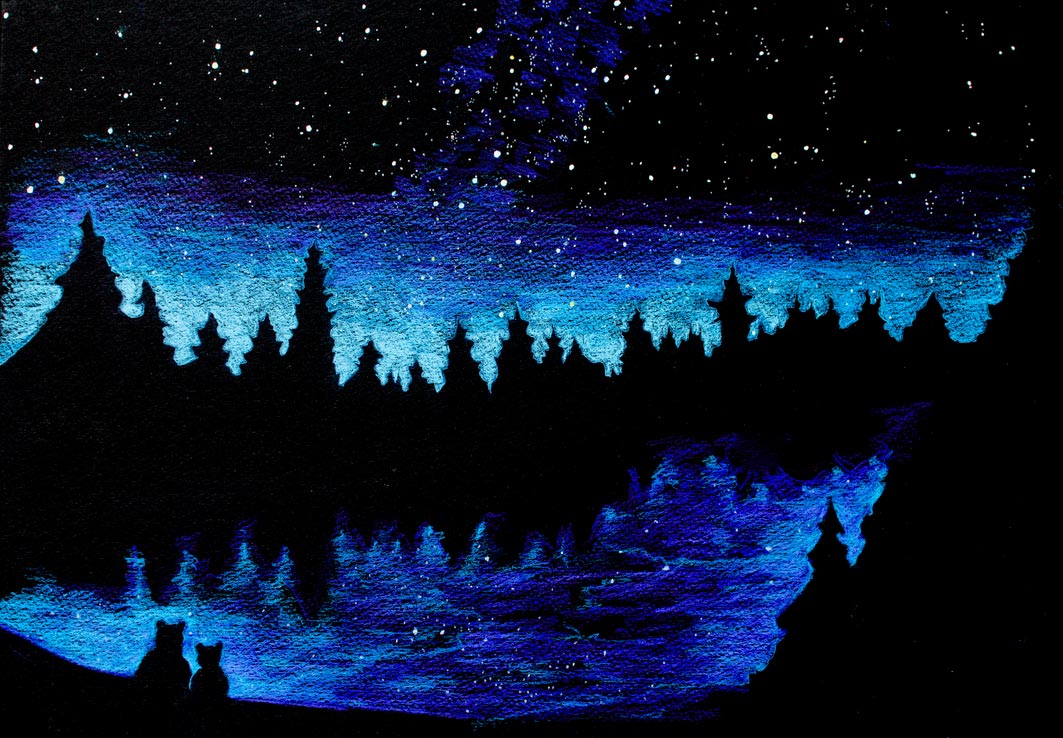PLU Physics Professor Writes and Illustrates Children’s Book

Image: Associate Professor of Physics Katrina Hay at the physics demos at PLU on Friday, Sept. 26, 2014. (Photo by John Froschauer/PLU)
By Samantha Lund '16
PLU Marketing & Communications
TACOMA, Wash. (Oct. 13, 2015)—When Katrina Hay was a child, her grandparents gave her a poster that depicted the structure of the universe and compared the sizes and shapes of its components.
That wondrous poster remained in her mind throughout her youth and became a beacon as she decided what to study in school. The feeling of being so small, yet part of a universe so big, was the inspiration behind her vocational choice: to educate others about the universe and the world around them.
Hay is now Associate Professor of Physics at Pacific Lutheran University. Earlier this year, she took a sabbatical from teaching college courses on electromagnetism, physics and calculus-based physics to turn her attention to a much younger group of learners.
Hoping to reproduce the feelings her old poster gave her, and to inspire children to get involved in science, Hay spent part of her break writing Little Bear’s Big Night Sky.
What story does Little Bear’s Big Night Sky tell?
It’s is a children’s story about the surprising scale and elegance of our universe. The book invites readers to wonder and think big. In the story, Little Bear and Mama Bear live in the wilderness, where they can see bright stars and the Milky Way. Little Bear asks about where they live and is in for a surprise; wise Mama Bear describes the land, ocean, Earth, solar system, galaxy and beyond.
Where did you get the inspiration to write a children’s book?
Little Bear’s Big Night Sky was inspired by my passion for astronomy and stargazing in night skies of the American west. I used to ask, “What’s up there?” Searching for an answer led me to study science, to work for NASA’s Jet Propulsion Laboratory and Rattlesnake Mountain Observatory and to a career sharing my passion for learning science.
What was it like to write and illustrate such a visual book?
The story had been on my mind for several years. I wondered if it would be a story that others could enjoy. Last year, I decided to revisit it and add illustrations. It was a project that required many drafts and edits, but I enjoyed the process.
Can you share a bit about the illustrations in the book and your artistic process?
I had specific ideas that I wanted to get across in the images, and I enjoyed the challenge of making the illustrations myself. My family and friends encouraged me to try it. Some of the illustrations are my renditions of celestial objects, like Orion’s Sword nebula, the Oort cloud surrounding our solar system and Andromeda galaxy. The starscape on the book’s cover mimics the night sky in the northern hemisphere on a summer night. If you look closely, you can see familiar summer constellations. Drawing the illustrations is the part that took the most time. However, it was fun to create them, and it is rewarding to see my work in print.
What was your overall goal in writing Little Bear’s Big Night Sky?
My goal with this project is to reach out to children with a positive message about science. Astronomy is one of my favorite topics; it is what led me to study physics. It’s natural for all of us to wonder about our place in the universe and to wish to see farther and farther out into the cosmos. I included additional scientific information in the back of the book to facilitate further discussion. I hope the book will inspire children and their families to look at the stars and wonder what’s up there. A single opportunity to observe and wonder may set a child on her life path.
Are you interested in doing more writing and educating for younger children?
My mother is already asking me if I will write a sequel. I don’t yet have plans to write another book but, for now, I will happily continue spreading a positive message about science to my community. To advance science, we need to invite as many people as possible to the table.
IMAGE SLIDER: Associate Professor of Physics Katrina Hay and others at the 2014 Physics Demo Theater at PLU. (Photos: John Froschauer/PLU)



